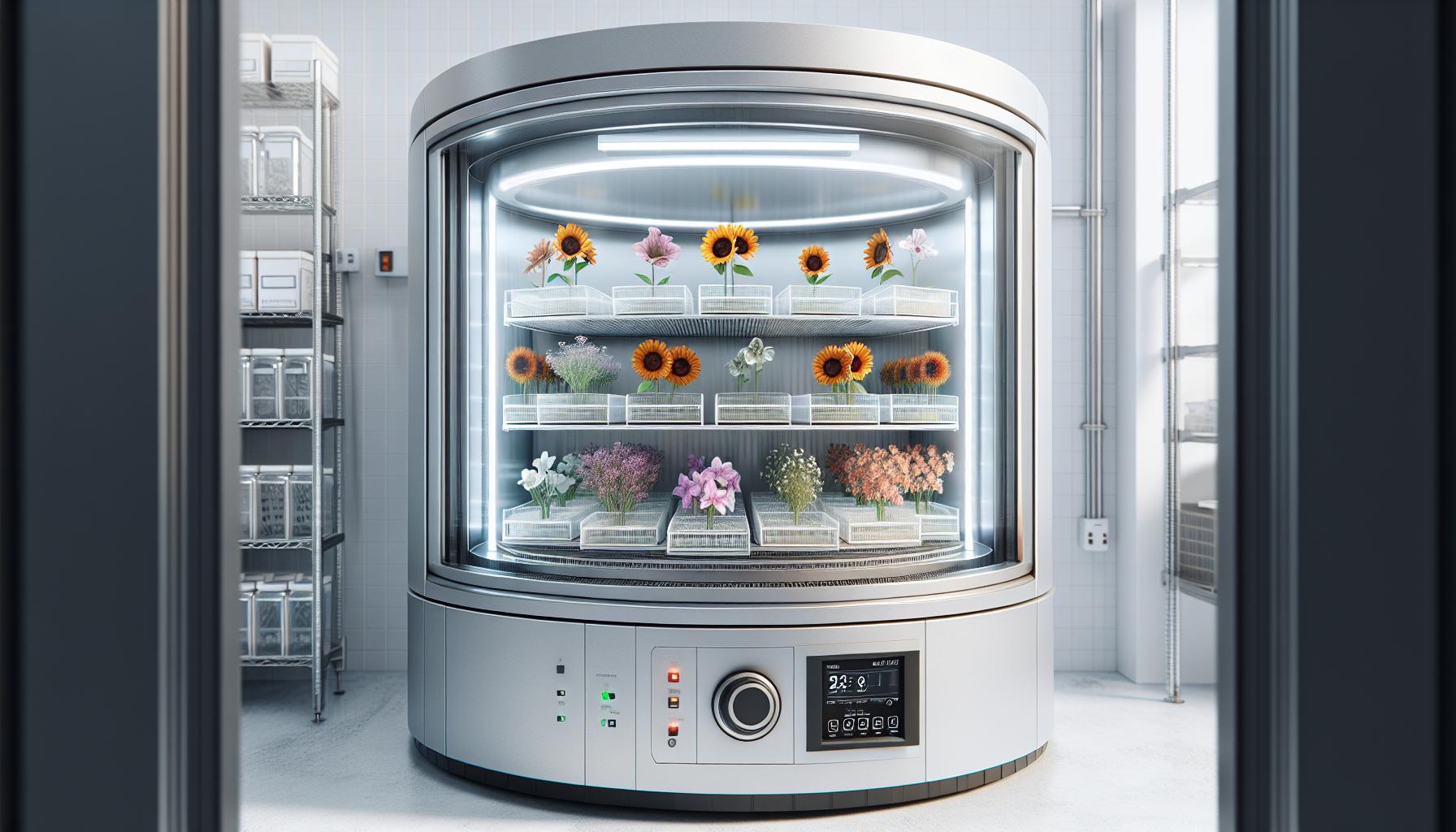Preserving the delicate beauty of flowers through freeze-drying has become increasingly popular among craft enthusiasts and professional florists alike. This unique preservation method maintains the natural color shape and texture of flowers far better than traditional air-drying techniques.
Freeze-drying flowers involves removing moisture through sublimation – a process that transforms water directly from ice to vapor while maintaining the flower’s original structure. This can be done using professional equipment or through DIY methods in a home freezer.
Creating lasting memories with freeze-dried flowers opens up endless possibilities for crafting wedding bouquet preservation home decor and artistic projects. The process requires patience and attention to detail but the stunning results make it a worthwhile endeavor for anyone looking to preserve nature’s beauty indefinitely.
“1. Select fresh, unblemished flowers
Fresh flowers create optimal freeze-dried results that last for years. The selection process focuses on three key factors: bloom stage, petal condition & overall flower health.
Optimal Bloom Stage:
- Choose flowers at 75-80% bloom
- Select buds just before full opening
- Avoid fully opened or mature blooms
Petal Requirements:
- Free from spots or discoloration
- No tears or damaged edges
- Firm texture without wilting
- Clean surfaces without dirt
Best Flower Types:
- Roses
- Orchids
- Hydrangeas
- Lilies
- Daisies
- Carnations
- Brown or yellow edges
- Soft or mushy petals
- Visible blemishes or holes
- Wilted stems
- Pest damage
- Water spots
Morning harvest yields the best results when flowers contain peak moisture levels. Examine each bloom individually, as one damaged flower can affect the entire batch during the freeze-drying process.
2. Remove excess moisture

Gentle blotting with paper towels eliminates surface moisture from flower petals without damaging delicate tissues. Place flowers between two clean paper towels then apply light pressure to absorb any water droplets. A silica gel desiccant packet placed near the flowers during this process absorbs additional ambient moisture.
Key moisture removal steps:
- Pat petals dry with lint-free cloth or paper towel
- Allow flowers to air dry for 15-20 minutes at room temperature
- Remove water droplets from stems using absorbent material
- Place flowers in a low-humidity area before freeze-drying
| Flower Type | Drying Time | Humidity Level |
|---|---|---|
| Roses | 15-20 min | Below 40% |
| Orchids | 10-15 min | Below 35% |
| Daisies | 10-12 min | Below 45% |
This gentle moisture reduction process preserves the flowers’ structural integrity while preparing them for optimal freeze-drying results. Different flower varieties require varying drying times based on petal thickness & water content.
3. Arrange on freeze dryer trays

Proper arrangement of flowers on freeze dryer trays determines the quality of preservation. Place each flower with 1-inch spacing between blooms to allow proper airflow during the drying process. Small flowers like daisies fit 6-8 per tray while larger blooms like roses require 3-4 per tray.
- Lay flat-faced flowers like daisies horizontal on the tray
- Position curved blooms like roses at a slight angle
- Orient delicate petals away from tray edges
- Arrange similar-sized flowers together on the same tray
- Leave 2 inches of clearance around tray edges
Create stable flower positions using small silicone supports under stems to prevent movement. Line each tray with parchment paper before arranging flowers to protect delicate petals from direct contact with metal surfaces.
| Flower Type | Flowers Per Tray |
|---|---|
| Roses | 3-4 |
| Daisies | 6-8 |
| Orchids | 4-5 |
| Baby’s Breath | 10-12 |
4. Run freeze dry cycle (24-48 hours)

The freeze-drying cycle operates through four temperature phases that extract moisture from flowers. Starting the cycle requires setting the temperature to -40°F (-40°C) for the initial freezing phase.
The primary drying phase activates when:
- Chamber pressure drops to 100-200 millitorr
- Shelf temperature rises to 20°F (-6°C)
- Condenser maintains -40°F (-40°C)
The secondary drying phase begins automatically after 18-24 hours:
- Chamber pressure drops to 50-100 millitorr
- Shelf temperature increases to 40°F (4°C)
- Product temperature stabilizes at 20°F (-6°C)
| Cycle Phase | Duration | Temperature | Pressure |
|---|---|---|---|
| Initial Freeze | 4-6 hrs | -40°F | Atmospheric |
| Primary Dry | 12-18 hrs | 20°F | 100-200 mT |
| Secondary Dry | 8-12 hrs | 40°F | 50-100 mT |
| Final Phase | 2-4 hrs | Room temp | Atmospheric |
Monitor the cycle progress through the digital display interface. The process completes when moisture content reaches 1-3% based on weight measurements. Leave flowers in the chamber for 2-4 additional hours after cycle completion to prevent temperature shock.
5. Store in airtight containe”
Store freeze-dried flowers in airtight containers with silica gel packets to maintain their pristine condition. Place each bloom in acid-free tissue paper before transferring to the container to prevent crushing. Position larger flowers at the bottom with smaller blooms on top creating natural layers.
Storage requirements for freeze-dried flowers:
- Clear glass containers with rubber seals
- 2-3 silica gel packets per container
- Acid-free tissue paper between layers
- Cool dark location between 65-70°F
- Relative humidity under 45%
Specific container sizes match flower types:
| Flower Type | Container Size | Max Quantity |
|---|---|---|
| Roses | 8×8 inches | 3-4 blooms |
| Daisies | 6×6 inches | 6-8 blooms |
| Orchids | 10×6 inches | 2-3 stems |
Label each container with the date of freeze-drying for tracking preservation quality. Check containers monthly for condensation buildup removing any moisture-damaged blooms. Replace silica gel packets every 3-4 months to maintain optimal moisture absorption.



